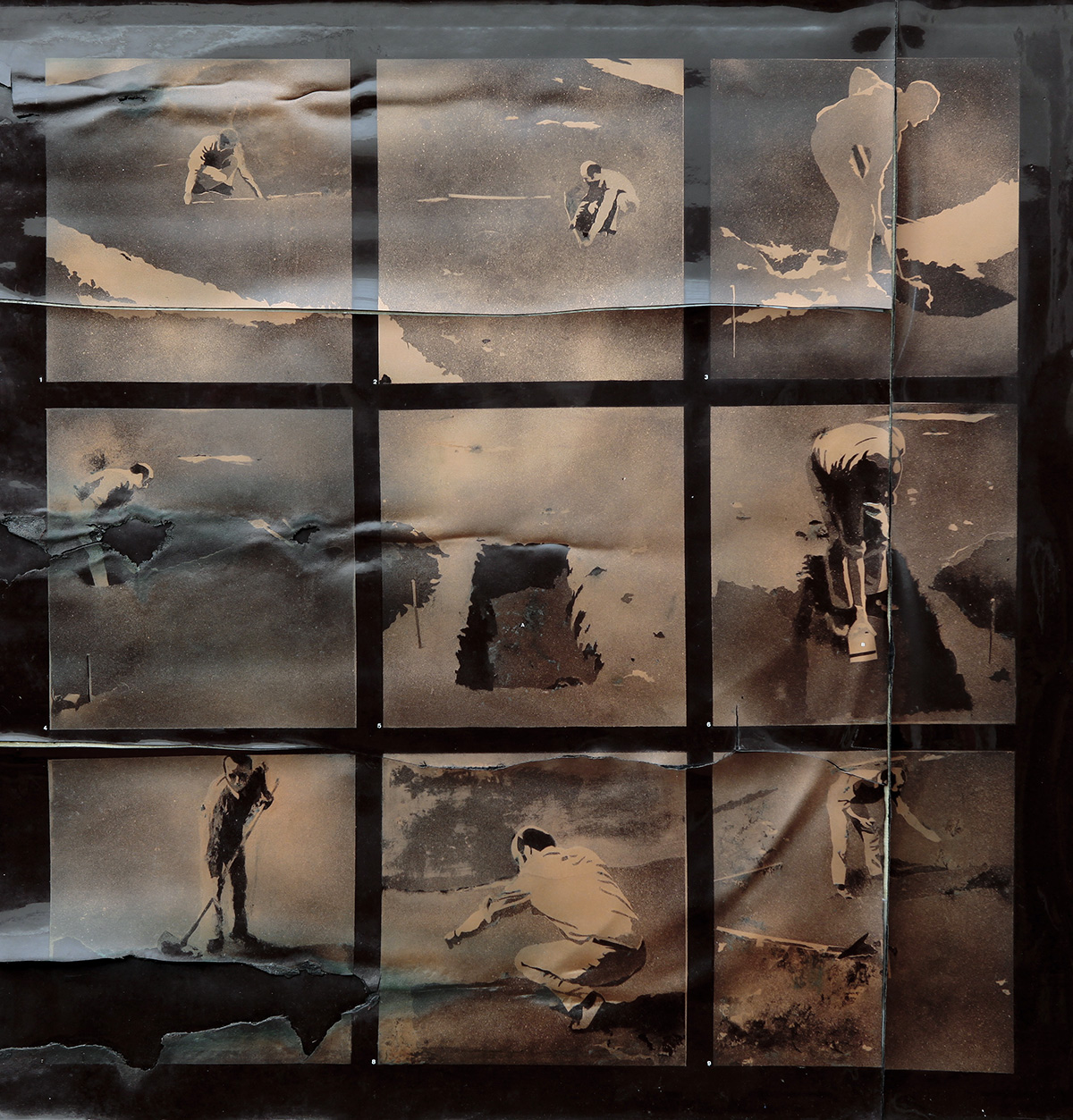Reflections. An Exhibtion by Tamás Zankó
An Exhibition of Kiscell Museum – Municipal Gallery, the French Institute of Budapest and Association Zanko Tamas
On view: 17 October – 26 November 2017
Reflections. An Exhibtion by Tamás Zankó
An Exhibition of Kiscell Museum – Municipal Gallery, the French Institute of Budapest and Association Zanko Tamas
On view: 17 October – 26 November 2017

Tamás Zankó: Beyond the Seas , 1965
From pop art paintings to environments and colored pattern prints on waxed canvas, from exhibition and theatrical decorations to autonomous art pieces: a great variety of techniques appear in the works of Tamás Zankó who is presented to the Hungarian public for the first time here in the former church space of Kiscell Museum.

Tamas Zankó: The Tomb, 1972/2007
The artist left his home country after the 1956 Revolution and settled in Paris in 1957 where he had lived and worked until his death in 2009. Unfortunately, his studio, along with a great number of his works, was destroyed by a fire in 2007.
Having arrived in Paris, Zankó enrolled in a painting course at École des Beaux-Arts and then in theatrical art studies at École des Arts Décoratifs. Soon after, he received commissions to design scenes and costumes. He took up painting again in the early 1960s, creating works in line with the artistic trends of that time, lyric abstraction and pop art, which were displayed at the Paris Biennales of 1963 and 1965 respectively. He also presented his works as part of several artists’ groups headed by Ben Vautier, Jean Le Gac, and Christian Boltanski. He participated in the collective exhibition held at the American Cultural Centre (Centre Culturel Américain) in 1969 entitled Work in Progress where he displayed his “Work in Process” performance digging a grave and burying his brushes contained in a secret box – a metaphor for the end of easel-painting. Some photos made by Boltanski at this event were later used by Zankó for his composition “A sír” (“The Grave”) presented in our exhibition as well.

Tamás Zankó: Island of Death, 1973
His conceptual period was cut short as his desire for self-expression took him in other directions. During the 1970s he was occupied with the idea of self-reflection, a special and subjective interpretation of the history of art and culture. The double meaning word réflexion became a key concept of his art from that point forward. The “Reflexion-thought” (“Réflexion-pensée”) on himself, on humanity, on art, gains form through a series of recurring motives placed into different contexts from time to time. The carrier material suitable for reflecting things became the Jok – a thick waxed canvas with a dark surface reflecting its surrounding, creating a permanently changing relationship with the actual representation that it is supporting. In this way, a picture can never be called finished but it can incorporate some new reflections always remaining “an open work of art”. The stencil (colored pattern print) or pochoir technique, suitable for varying and reinterpreting the motives, gives an endless opportunity to rewrite history. Memory, the artist’s identity and permanent self-reflection are built upon one another in a changeable sight and in a layered structure. The main motives – like leitmotives in music – are the reflections of thoughts and themes occupying the artist’s mind: childhood, memories, mythical places and persons, outstanding ancestors.
The bright lights gleaming on the dark background resemble baroque paintings, the clair-obscur effect lend theatricality to his pictures, however Zankó had little opportunity to display his sense for theatricality in his theatrical scene designs. Two important exceptions are his work for the Bluebeard’s Castle production in the Opéra du Rhin of Strasbourg in 1978 and his contribution to the opera-film Orfeusz és Eurydiké directed by István Gaál in 1984. In his architectural reflections for Paris, Zankó turned the deep ditch of Les Halles into an antique amphitheater and placed an Opera-ship on the Place de la Bastille.
His works are present in the collections of the National Foundation for Contemporary Art (FNAC), and a new generation of street artists – experiencing the stencil technique too – discover the pioneer work of Tamás Zankó painted throughout the walls of Paris.